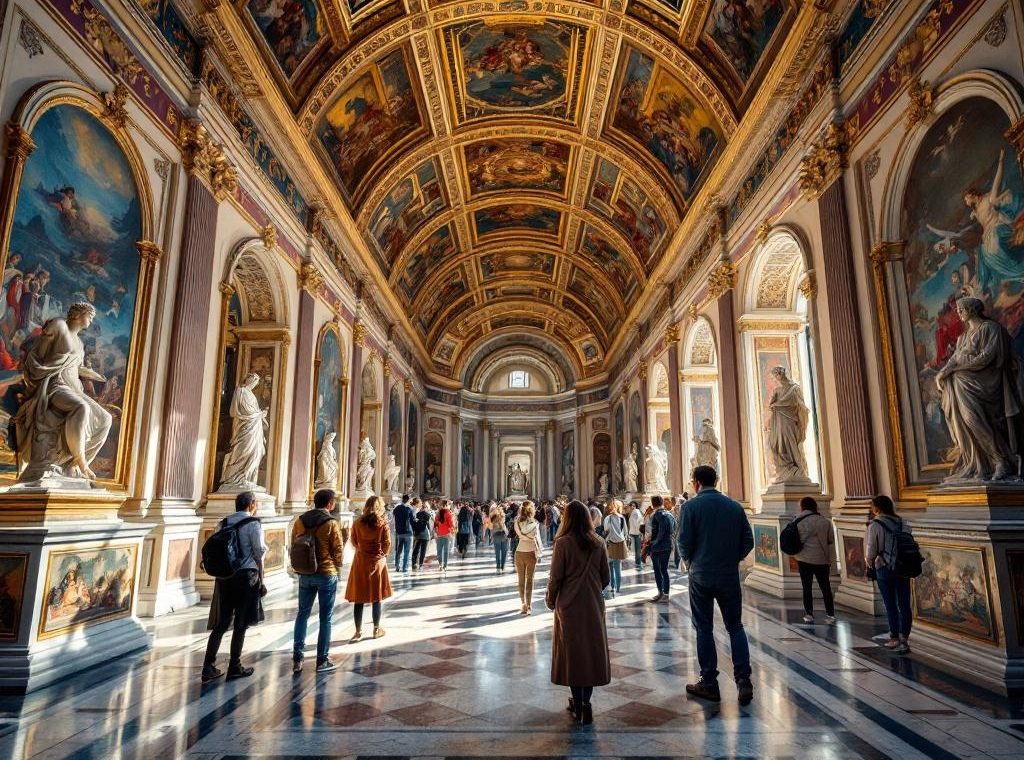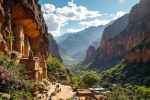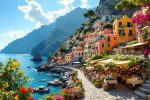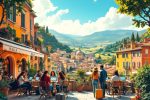Exploring the Vatican Museums in Rome
Journey through centuries of art and history at the Vatican Museums, home to the world’s largest private collection with 70,000 pieces! Explore 54 galleries, from Michelangelo’s Sistine Chapel and Raphael’s Rooms to ancient Roman sculptures. Skip the lines by booking tickets online. Dress respectfully and wear comfortable shoes to experience this must-see Roman destination. Discover more and plan your visit today!
Important information
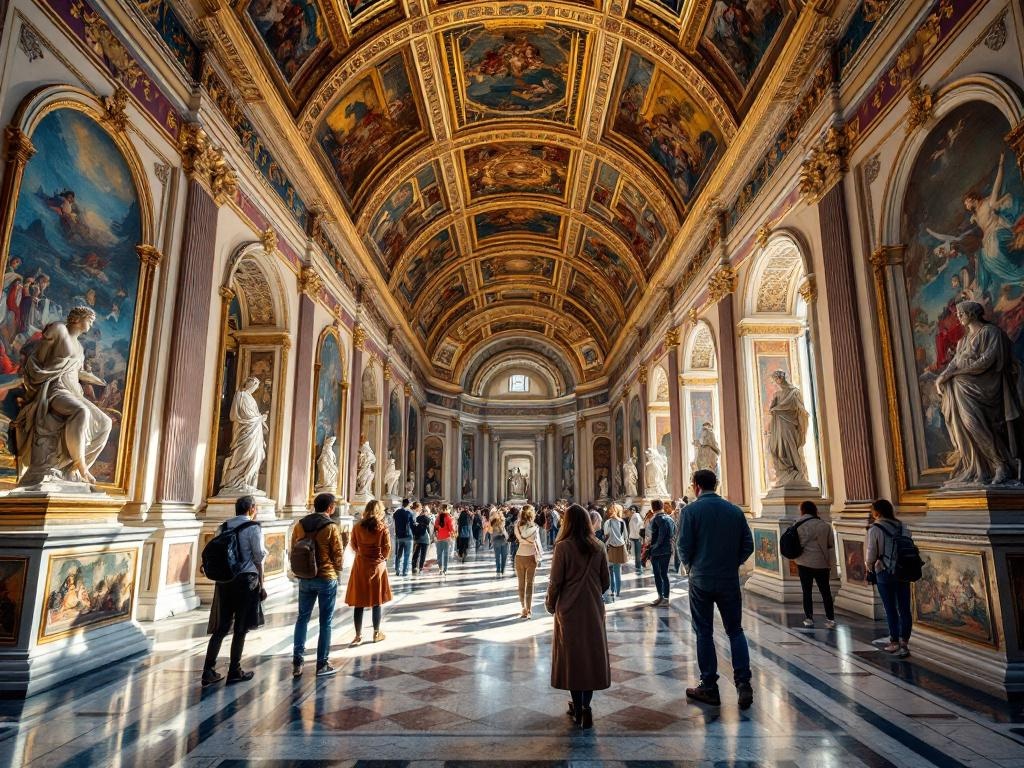
- The Vatican Museums hold one of the world’s largest private art collections with 70,000 pieces, of which 20,000 are on display.
- Open Monday to Saturday, 9 am to 6 pm. Closed Sundays, except the last Sunday of the month (free entry). Closed on some public holidays.
- Key highlights: Sistine Chapel (Michelangelo’s frescoes), Raphael’s Rooms, Gallery of Maps, Pio-Clementino Gallery (sculptures), and the Ethnological Museum.
- Dress respectfully (shoulders and knees covered). No photos in Sistine Chapel. No flash or tripods allowed.
- Book tickets online, wear comfy shoes, grab a map, and consider a guided tour or audio guide.
Introduction to the Vatican Museums
Experience the Vatican Museums: A Journey Through Art and History.A trip to Rome wouldn’t be complete without visiting the Vatican Museums, housing one of the world’s largest private art collections. Explore an incredible assortment of Renaissance masterpieces and ancient sculptures, offering a unique glimpse into history and art within Vatican City. Among the renowned works, the Sistine Chapel stands out as a must-see. The museums’ architecture itself is also stunning. Expect crowds, especially during peak season, but the enriching experience is undoubtedly worth it.
Why the Vatican Museums are a Must-See in Rome
Experience the Vatican Museums: A must-see on your Roman adventure. Explore unparalleled collections of art and artifacts spanning centuries, showcasing masterpieces by Renaissance giants like Michelangelo and Raphael. Marvel at the breathtaking Sistine Chapel ceiling and the equally impressive Raphael Rooms. Discover extensive Roman collections, filled with ancient sculptures and artifacts, offering a unique blend of art, history, and religious significance. Be prepared for crowds, as this is a popular Roman highlight.
The World’s Largest Private Art Collection
The Vatican Museums house a vast and impressive art collection, the largest privately held in the world. Of its 70,000 pieces, 20,000 are on display. The collection encompasses artifacts from ancient Egypt and breathtaking Renaissance masterpieces.
Essential Information for Visiting the Vatican Museums
Before you travel, make sure you have the necessary visa or permits. Check the latest entry requirements here: Use our travel entry requirements checker. The Vatican Museums are open to visitors Monday through Saturday, from 9 am to 6 pm. They are closed on Sundays, except for the last Sunday of the month, which offers free admission. The museums are also closed on select public holidays. Tickets are required.
Opening Hours and Days
The Vatican Museums welcome visitors Monday through Saturday, from 9 am to 6 pm. They are closed on Sundays, except for the last Sunday of each month, which offers free admission. The Museums are also closed for select public holidays. For the latest information on opening hours and holiday closures, please visit the official Vatican Museums website.
Ticket Booking and Entry Requirements
Secure your tickets online in advance. Please dress respectfully, ensuring your shoulders and knees are covered.
Dress Code and Accessibility Features
Please dress respectfully, ensuring your shoulders and knees are covered. Wheelchair access is available.
Exploring the Galleries and Architecture
The Vatican Museums house an impressive collection of art and artifacts within their 54 galleries. The museums’ architecture is a work of art, featuring the remarkable double helix Bramante Staircase and the visually stunning Spiral Staircase. These staircases facilitate smooth transitions between floors.
The Bramante Staircase’s ingenious design allows for simultaneous ascending and descending traffic. Visitors can also enjoy breathtaking views of St. Peter’s Square from the terrace.
The Architectural Wonder of the Bramante Staircase
The Vatican Museums house two extraordinary architectural masterpieces: the Bramante Staircases. The original staircase, designed by Donato Bramante in 1505, features a double helix structure, ingeniously permitting people to ascend and descend without crossing paths. This innovative design provided Pope Julius II with private access to his apartments.
However, the limited capacity of the original staircase couldn’t handle the influx of modern visitors. Therefore, in 1932, Giuseppe Momo designed a modern counterpart, also employing a double helix design. This modern staircase ensures a smooth flow of descending visitors, separate from those ascending. Both staircases stand as elegant testaments to architectural brilliance, offering visitors a truly unique experience.
The Spiral Staircase: A Unique Design
In 1932, Giuseppe Momo designed an innovative double helix staircase. Its interwoven spirals allow people to ascend and descend without collisions, elegantly streamlining foot traffic. The stairs’ gentle incline further enhances accessibility for visitors. A glass roof bathes the structure in natural light.
The Terrace with a View: St. Peter’s Square and Beyond
From the terrace, take in the breathtaking view of St. Peter’s Square. Admire its grand architecture and the surrounding cityscape, all dominated by the magnificent dome of St. Peter’s Basilica.
Top Attractions in the Vatican Museums
No visit to Vatican City is complete without marveling at Michelangelo’s ceiling frescoes in the Sistine Chapel.
Raphael’s Rooms, adorned with Renaissance masterpieces, are equally impressive and worth exploring.
Discover the detailed cartography of the Gallery of Maps for a unique and fascinating experience.
The Pio-Clementino Gallery houses a remarkable collection of impressive sculptures.
Explore the diverse cultural treasures from around the world at the Ethnological Museum.
The Sistine Chapel: Michelangelo’s Masterpiece
Michelangelo’s iconic frescoes grace the Sistine Chapel, a breathtaking highlight of the Vatican Museums and a truly unmissable experience. The ceiling depicts nine scenes from the Book of Genesis. The altar wall showcases the awe-inspiring “Last Judgment”. Beyond its artistic significance, the chapel serves as a vital religious hub, notably hosting papal conclaves within its sacred space.
Raphael’s Rooms: Artistic Marvels of the Renaissance
Raphael’s Rooms, a suite of four breathtaking chambers within the Vatican Palace, boast iconic frescoes by the master artist and his workshop. Originally designed for Pope Julius II, the Stanze della Segnatura now showcase masterpieces of the Italian Renaissance, representing the core themes of philosophy, poetry, theology, and law. Among the most celebrated works are The School of Athens, The Disputation of the Holy Sacrament, and Parnassus, each a testament to Raphael’s extraordinary skill.
Gallery of Maps: A Journey Through Geography
The Gallery of Maps showcases forty stunning frescoed maps of 16th-century Italy. Painted between 1580 and 1585, these unique depictions offer a fascinating glimpse into each Italian region during that era.
Pio-Clementino Gallery: Sculptures and Statues
The Pio-Clementino Gallery houses a breathtaking collection of ancient Greek and Roman sculptures, including masterpieces like the Apollo Belvedere and the intensely dramatic Laocoön Group. This gallery, a highlight of the Vatican Museums, is essential viewing for all visitors.
The Ethnological Museum: Cultural Treasures
The Ethnological Museum houses global artifacts, offering a fascinating glimpse into diverse cultures and civilizations. Its vast collection showcases a wide array of traditions and ways of life.
Must-See Artworks in the Vatican Museums
Michelangelo’s Pietà, a poignant sculpture of Mary cradling Jesus, awaits in St. Peter’s Basilica. Also, admire his massive bronze canopy, Il Baldacchino, gracing the papal altar.
Caravaggio’s dramatic Deposition portrays Christ’s descent from the cross. His equally powerful Crucifixion of Saint Peter is equally compelling.
Raphael’s final masterpiece, The Transfiguration, is an essential stop. See also his Annunciation, depicting Gabriel’s visit to Mary.
Don’t miss the classical Apollo Belvedere, a statue of the Greek god. The intensely dramatic Laocoön Group shows the Trojan priest and his sons struggling against serpents.
Michelangelo’s La Pietà and Il Baldacchino
Michelangelo’s renowned marble sculpture, *La Pietà*, depicts Mary cradling Jesus after the Crucifixion. It’s located in St. Peter’s Basilica, a frequent point of confusion, as many mistakenly believe it resides in the Vatican Museums. Another significant artwork within St. Peter’s is Bernini’s *Il Baldacchino*, the impressive bronze canopy over the papal altar, often misattributed to Michelangelo. To enhance your visit, consider an audio guide or a guided tour.
Raphael’s Transfiguration and Annunciation
Raphael’s final painting, *The Transfiguration*, juxtaposes two distinct narratives: Christ’s transfiguration and the healing of a possessed boy. In *The Annunciation*, he captures the pivotal moment where the angel Gabriel informs Mary of her divine conception. Both masterpieces showcase Raphael’s artistic brilliance, from his masterful composition and use of color to his ability to evoke profound emotion. Consider using an audio guide or joining a guided tour to gain deeper insights into these iconic works.
Caravaggio’s Deposition and Crucifixion of Saint Peter
Caravaggio’s *Deposition* (1602–1604) and *Crucifixion of Saint Peter* (1600–1601) are housed in the Cerasi Chapel of Santa Maria del Popolo in Rome. The *Deposition* is a powerful and emotional depiction of Christ being lowered from the cross. The *Crucifixion of Saint Peter* portrays Peter’s martyrdom. Both paintings are intensely realistic and dramatically use light and shadow, a technique known as tenebrism, which further heightens the emotional impact.
The Apollo Belvedere and Laocoön Group
The renowned Apollo Belvedere, a marble Roman sculpture, is believed to be a copy of a missing bronze Greek original and depicts the god Apollo.
Another remarkable piece housed within the Vatican Museums, specifically the Pio-Clementino Museum, is the Laocoön Group. This poignant Hellenistic marble sculpture portrays the Trojan priest Laocoön and his sons entangled in a deadly struggle with sea serpents.
Enhancing Your Visitor Experience
Enhance your Vatican Museums visit with these helpful tips:
Consider a guided tour or audio guide to enrich your understanding of the masterpieces, providing valuable context and insights.
Remember your camera to capture the stunning artwork, but be aware that photography is prohibited in the Sistine Chapel.
Utilize the detailed map provided to navigate the extensive museum complex efficiently and ensure you don’t miss any key exhibits.
Book your tickets online in advance to avoid potential queues and secure your preferred entry time. Wear comfortable shoes, as you’ll be doing a lot of walking throughout the vast museum.
Guided Tours and Audio Guides
Skip the long lines at the Vatican Museums with a guided tour led by experts who will bring the art and history to life. Tours are available in multiple languages and cater to various interests, from Renaissance masterpieces to the Etruscan collection. Alternatively, enrich your visit with an audio guide that provides detailed historical context for a deeper understanding of the artwork. Choose the tour or audio guide that best suits your preferences for a more rewarding Vatican experience.
Guided Tours
Bypass long queues and delve into the art and history with expert guides. Tours are available in multiple languages and cater to diverse interests, such as:
- renaissance masterpieces,
- the Etruscan collection,
- and more.
Audio Guides
Enhance your visit with a rich historical context. Audio guides provide a deeper understanding of the artwork at your own pace.
Photography Rules and Tips
Photography is generally permitted within the Vatican Museums.
The Sistine Chapel is a notable exception; no photos are allowed there.
Additionally, flash photography and tripods are prohibited throughout the entire museum complex. Please keep these guidelines in mind during your visit.
Understanding the Museum Map
Navigating the Vatican Museums is much easier with a map. It highlights key areas, including galleries, restrooms, cafes, and exits, allowing visitors to plan a more efficient route. Having a map can significantly improve your visit by:
- Providing a clear overview of the museum layout.
- Helping you locate essential amenities like restrooms and cafes.
- Enabling you to prioritize galleries and exhibits based on your interests.
Best Travel Tips for a Memorable Visit
- Save time and book your tickets online.
- Dress respectfully, ensuring your shoulders and knees are covered.
- Comfortable shoes are essential for exploring the vast museum.
- Download a map or join a guided tour to make the most of your visit.
- Plan for ample time, as the collection is extensive.

